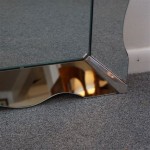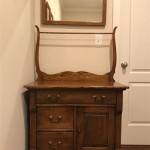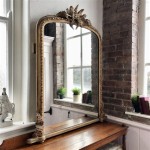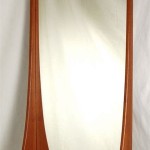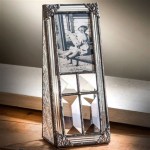How to Repair a Broken Mirror
A broken mirror can be more than just an inconvenience; it can also be a safety hazard. While replacing a broken mirror is often the safest and most practical solution, minor cracks and chips can sometimes be repaired, saving money and extending the mirror's lifespan. This article will outline methods for repairing small damages in mirrors, emphasizing safety precautions and appropriate repair techniques.
Assessing the Damage
Before attempting any repair, carefully assess the extent of the damage. Small, hairline cracks and minor chips are often repairable using DIY methods. However, large cracks, shattered pieces, or damage near the mirror's edge generally warrant replacement. Repairing severely damaged mirrors can compromise structural integrity and pose safety risks.
Careful inspection should also include the mirror's backing. If the backing is damaged along with the glass, the repair may not be effective, and replacement is likely necessary. Attempting to repair structurally compromised mirrors increases the risk of further breakage and potential injury.
Gathering Necessary Materials
Depending on the repair method chosen, several materials might be required. For minor chips and cracks, a clear epoxy resin designed for glass repair is often suitable. These resins are readily available at hardware stores and often come in kits with applicators. Ensure the chosen epoxy is specifically formulated for use on glass mirrors for optimal adhesion and clarity.
Other helpful tools include a razor blade scraper, rubbing alcohol, and cotton swabs for cleaning the damaged area. Safety glasses and gloves are essential to protect against glass shards and resin chemicals. For larger chips, a small piece of mirror glass, cut to fit the damaged area, might be necessary. Specialized glass cutters are available for this purpose, but professional assistance is recommended for precise cutting.
Repairing Small Chips and Cracks
For small chips and cracks, applying a clear epoxy resin is usually effective. First, thoroughly clean the damaged area with rubbing alcohol and cotton swabs to remove any dust, dirt, or grease. A clean surface is essential for proper adhesion of the epoxy resin.
Following the manufacturer’s instructions, carefully apply the epoxy to the damaged area. Use a toothpick or the applicator provided to fill the crack or chip completely, ensuring no air bubbles are trapped. Remove any excess epoxy with the razor blade scraper before it cures. Allow the epoxy to cure completely according to the manufacturer’s instructions, typically for 24 to 72 hours.
Once cured, carefully polish the repaired area with a soft cloth to restore the mirror's smooth surface. If the chip is slightly recessed, multiple applications of epoxy might be required, allowing each layer to cure fully before applying the next.
Repairing Larger Chips
Repairing larger chips often involves replacing the missing glass fragment. This repair method is more complex and requires precise cutting of a replacement piece. If uncomfortable working with glass, seek professional assistance for this process.
If attempting the repair, carefully measure and cut a replacement piece of mirror glass to fit the chipped area. Clean the damaged area thoroughly as described earlier. Apply a thin layer of mirror adhesive, specifically formulated for bonding mirror glass, to the back of the replacement piece and carefully position it in the chipped area. Secure the replacement piece with masking tape until the adhesive cures.
After the adhesive has cured completely, carefully remove the masking tape and clean any excess adhesive. The repaired area may require polishing to blend seamlessly with the surrounding mirror surface.
Safety Precautions
Working with broken glass always involves safety risks. Throughout the entire repair process, wear safety glasses to protect your eyes from glass shards. Wear gloves to prevent cuts from sharp edges. Handle broken mirror pieces with caution and dispose of them properly in a puncture-resistant container clearly labeled as broken glass.
Ensure adequate ventilation while working with epoxy resin or mirror adhesive, as fumes can be irritating. Work in a well-lit area to clearly see the damaged area and avoid further mishaps. If the damage is extensive or if you are uncomfortable handling any part of the repair process, consult a professional glass repair service.

How To Repair A Ed Mirror 13 Steps With Pictures Wikihow

How To Repair A Ed Mirror 13 Steps With Pictures Wikihow

How To Repair A Ed Mirror 13 Steps With Pictures Wikihow

How To Repair A Broken Mirror Frame Diy Inspired

How To Repair A Broken Mirror Frame Diy Inspired

How To Fix A Broken Mirror Instead Of Replacing It Worst Room

How To Fix A Ed Mirror The Diy Repair Guide

Broken Mirror Hometalk

How To Fix A Broken Mirror Instead Of Replacing It Worst Room

How To Repair Broken Mirror Diy



